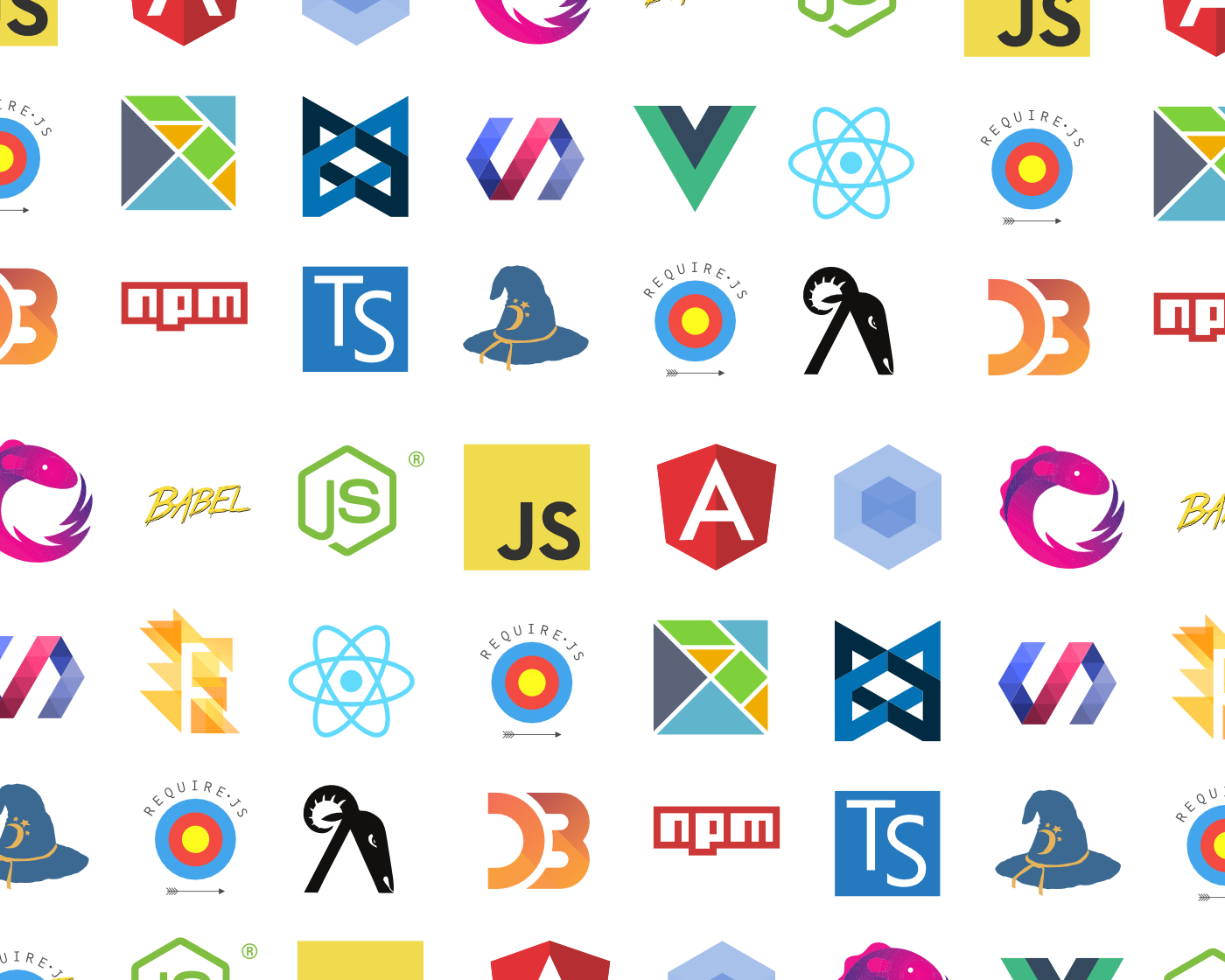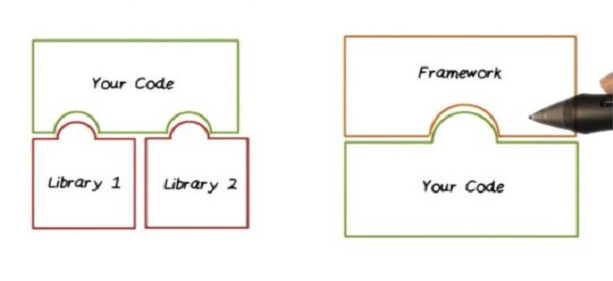Intro to frameworks and libraries
Contents

Library and Framework
Both frameworks and libraries are reusable code written by someone else that is used to help solve common problems.
Library vs. Framework
A library is like going to IKEA. You already have a home, but you need a bit of help with your funiture. You pick and choose the furniture, you are in control.
A framework is like building a model home. You have a set of blueprints and a few limited choices when it comes to architecture and design.
Inversion of control
What is the technical difference between library and framework

Inversion of control
Library: You are in charge of the flow of the application. You decide when and where to call a library.
Framework: The framework is in charge of the flow. It provides places for you to plugin your code, but it chooses when to call this code.
JS libraries
What is a library again?
A collection of reusable methods for a particular purpose.
It allows easier and faster development of JavaScript-based applications, especially for AJAX and other web-centric technologies.
A short history
jQuery as well as other JS libraries were born into a world with cross-browser quirks and standardization issues.
With JavaScript on its own many time-consuming workarounds were needed. And testing was very frustrating.
jQuery, Mootools, Prototype and other libraries helped developers with that by creating an abstraction layer.
Common libraries today
| Name | Since | Market share | Popularity | Example |
|---|---|---|---|---|
| jQuery (UI + Mobile) | 2006 | 95.5% of all websites | 34.4% of JS developers | pascualprestige.com |
| React JS | 2013 | 2.9% of all websites | 40.1% of JS developers | criticaltechworks.com |
What is jQuery?
jQuery is a feature-rich JavaScript library.
It is not a framework.
With our knowledge of JavaScript so far it will be quite easy to grasp jQuery.
What about today?
Is jQuery still needed?
Today a lot of the features, e.g. CSS selectors syntax and AJAX, which made jQuery so valuable can be done with pure JavaScript.
Some say jQuery is a relic of the past, others still use it day to day.
You might not need any more, but you certainly need to understand it.
jQuery is used by 78% of all websites
Mostly because of Wordpress
Recommendation:
Do not use jQuery for new website projects.
Pro
- jQuery has an extensible plugin system
- jQuery is stable
- jQuery supports older browsers
Con
- Rendering performance
- Increased bundle size
- Not needed if you only support modern browsers
Online Resources jQuery
Some libraries and plugins
- Three.js: creating 3D objects and spaces
- GSAP: all things animated
- D3.js: manipulating documents based on data
- Swiper: best mobile touch slider
- ... and many more
Libraries vs. plugin
Library is a collection of classes and functions that helps to develop an application or website.
Plugin is an extension that improves the capabilities of your application or website by adding one specific solution.
Our own JS library
It is useful to add common functions you will reuse in your website project to your own library, e.g.
addClassremoveClasshasClasstriggerClass- and more...
JS frameworks
How are JS frameworks built?
- Components or modules are the building blocks. They usually have one specific purpose and need to be imported, before they can be used.
- Packages are collection of modules, usually under one namespace and can be imported via package manager like NPM.
- State management is to share data across components. Often changes to the state need to be reflected in components and the data has to be synchronizes. Frameworks use libraries for that, e.g. Vues or Redux.
Common frontend frameworks
| Name | Since | Usage | Popularity | Example |
|---|---|---|---|---|
| Vue.js | 2014 | 0.7% of all websites | 18.9% of JS developers | umwelt.schweiz.ch |
| AngularJS | 2010 | 0.4% of all websites | 22.9% of JS developers | lamborghiniporrentruy.ch |
| Electron | 2013 | ~1'600 desktop apps | - | Slack / WhatsApp Desktop |
What about node.js?
Node.js is a JavaScript runtime environment. It can be run as a frontend as well as backend framework.
It includes everything you need to execute a program written in Javascript.
It moved Javascript from websites to standalone applications.
e.g. Electron JS uses node.js and Chromium to build and run Desktop apps.
Why do you need to know that?
All companies use a set of technologies to build applications (web, mobile, desktop), a combination of programming languages, frameworks, libraries, servers, tools and so on.
= tech stack.
Tech stacks
Most commonly used stacks are:
- LAMP: Linux, Apache, MySQL, and PHP
- MEAN: Mongo DB, Express.js, AngularJS, and node.js
Specialization
Even so called full stack developers cannot cover all stacks.
Today developers usually need to specialize. Switching jobs as a web developer might require for you to learn a new tech stack.